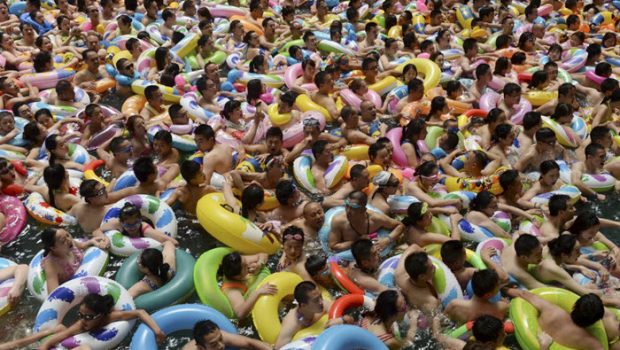Tokyo 2020: Prepare for the heat

When the 2016 Summer Olympics was held in Rio de Janeiro, the August schedule was deemed the best time of the year to visit the region. As the Southern Hemisphere winter weather shifts toward spring, typical temperatures were in the high 70s F as compared to Rio’s summer in the 90s.
Well, the next Summer Olympics won’t be so lucky.
As the 470 Class is experiencing now during their 2019 World Championships being held at the Olympic sailing venue in Enoshima, the heat is excessive.
“We need to do a lot of boat park work and we are all day in the sun,” shared Slovenia’s Veronika Macarol. “It is really hot here in Japan, high temperatures and a lot of humidity and you are sweating all the time.”
“It is really hot, we are racing in over 30 degrees (86° F) with this humidity,” notes Spain’s Nicolas Rodriguez. “It is really hard to be out there and on the downwinds we are pushing really hard and our heart rate is going really high.”
Temperatures have been stuck above 31 degrees Celsius in and around Tokyo since July 24, the date the Olympics are due to open next year in Japan’s capital. More than 1,800 people have been taken to hospitals in Tokyo during the past week.
Concerns over heat rose last year after Japan suffered a record heatwave. Temperatures reached 41.1 degrees Celsius (106° F) just north of Tokyo, which hosted its first Summer Olympics in the much-cooler month of October in 1964.
To minimize the problem, the Olympic marathons will start at 6am local time, an hour earlier than scheduled, while at last month’s beach volleyball test event in Tokyo, misting sprays and air-conditioned tents were among features trialed to combat the effects of rising temperatures.
So while the outdoor events seek to avoid the strain, the competition schedule for Sailing on July 26 to August 5 is from 12:00 to 18:00 local time. In 2018, air temperature during that span saw highs in the 90s F with wicked humidity.
Since 1976, most Summer Olympics have been held in the Northern Hemisphere summer due to international broadcasting and sports schedules. In June, Tokyo 2020 published an overview of countermeasures being taken to minimize the risk of heat on athletes and spectators.
Among the measures being considered is allowing spectators to bring their own bottled water into venues under certain conditions, which had previously been prevented at past editions of the Olympic Games due to security and sponsorship.
A Tokyo 2020 cooling project has been launched, with the aim to promote heat countermeasures led by the Japanese organizers with the support of 13 sponsors. This will include providing cool spaces and items, which can be sampled to mitigate heat.
In a bid to counter the searing heat, the Tokyo Metropolitan Government has also been installing special coatings on the city center’s roads, including areas of the marathon course, with materials that are expected to suppress temperature rises by as much as eight degrees centigrade.
“We will keep working closely together with the Tokyo Metropolitan Government, the National Government and relevant stakeholders to ensure the successful delivery of the Games,” Takaya adds.
Source: InsidetheGames, Scuttlebutt










